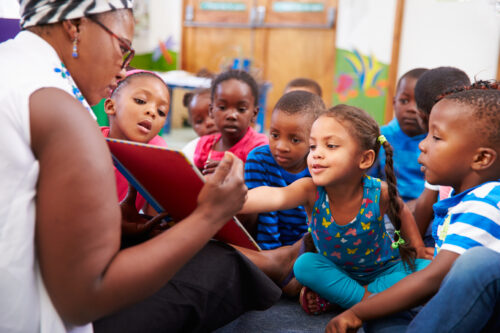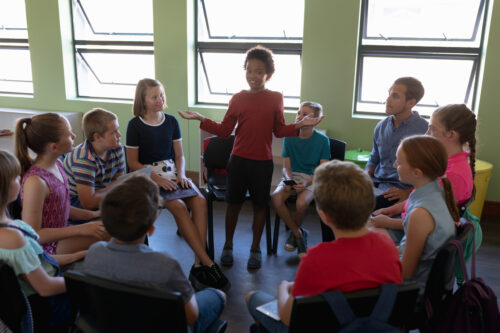- Build relationships. Your relationship with the children and youth is very important, more important than any planned activity. Childre
 n and youth learn best when they are with adults who genuinely like them. They are observing and learning from you—even if it doesn’t always seem like it! They are affected by the way you pray and the enthusiasm you show as you tell a story, sing a song, or lead a game. When you talk about your favorite Bible story or name things that you’re grateful for, you are modeling this for the children. When you smile and say something kind, this conveys acceptance and the love of God.
n and youth learn best when they are with adults who genuinely like them. They are observing and learning from you—even if it doesn’t always seem like it! They are affected by the way you pray and the enthusiasm you show as you tell a story, sing a song, or lead a game. When you talk about your favorite Bible story or name things that you’re grateful for, you are modeling this for the children. When you smile and say something kind, this conveys acceptance and the love of God. - Respect and honor differences. Make space for different experiences, remembering that each child or youth comes with a unique story. This means different socioeconomic backgrounds, church experiences, educational contexts (including homeschooling), racial-ethnic identities, family structures, physical abilities, and so on. Learning to know everyone may take some time, but as their stories unfold, be inspired by the blessing that each person brings.
- Establish routines. Following predictable routines helps children and even older youth feel comfortable, safe, and confident. Use the first weeks to set routines for the quarter or for the year. What should children and youth do when they come into the meeting space? What routines are needed? If there is more than one leader during the quarter, communicate the routines and expectations that have been established so that there is consistency from week to week.
- Respect each person’s comfort level. Some children and youth feel uncomfortable talking in front of a group. Allow them the option to pass if they do not want to talk. If you find that a child or youth never wants to speak in front of the group, talk with them privately before or after a session to see if anything is keeping them from feeling safe in sharing with the group. Incorporate ways to respond that don’t require verbal responses. For instance, all children could give a thumbs-up or thumbs-down to answer a question. Responses could be written down, collected, and shared anonymously.
- Encourage collaboration and teamwork. Choose activities where children or youth can work together in pairs or small groups whenever possible. Spend some time modeling how to listen well in a group setting. Encourage children or youth to share ideas and support each other. Working together on an art activity or pairing up to respond to a discussion prompt fosters cooperation and the development of strong relationships.
- Encourage leadership.
 Each person in the group can serve as a leader, even in simple ways. They can help prepare the room, set up chairs, and distribute supplies. Each person’s contribution demonstrates care for the other people in the group and helps create a positive space for worship and learning. Children and youth can also lead prayers, songs (including with instruments), and readings. Children of all ages want to know they have a place and that their participation and their leadership is valued and desired.
Each person in the group can serve as a leader, even in simple ways. They can help prepare the room, set up chairs, and distribute supplies. Each person’s contribution demonstrates care for the other people in the group and helps create a positive space for worship and learning. Children and youth can also lead prayers, songs (including with instruments), and readings. Children of all ages want to know they have a place and that their participation and their leadership is valued and desired. - Get to know parents or caregivers. Find ways to get to know and communicate with the parents and caregivers of your children or youth. Plan events or activities where they can participate alongside their children or youth, such as simple fellowship times or opportunities to help during a session. Plan an “open house” during the quarter where parents and caregivers can come prior to your regular meeting time to browse children’s artwork, view a readers theater or skit of a Bible story, or participate in a spiritual practice. Engaging with parents and caregivers can help strengthen your group’s sense of community by connecting families with one another.
How do you build relationships with the children and youth you teach? How do you help them get to know each other and feel welcome and valued? We’d love to share your ideas and suggestions! Send them to blog@shinecurriculum.com by September 13.
Facebook
Email

